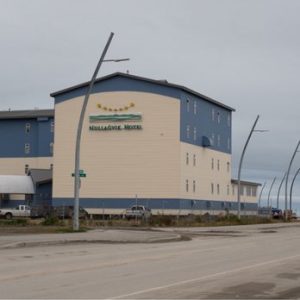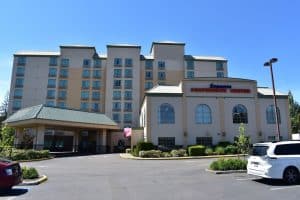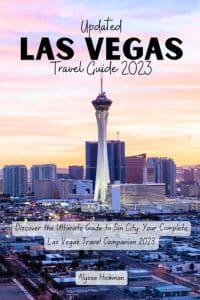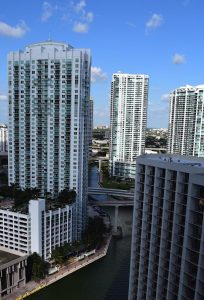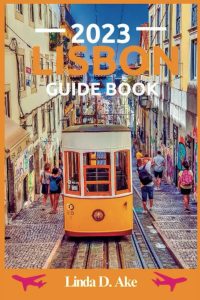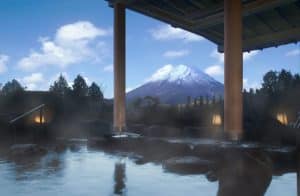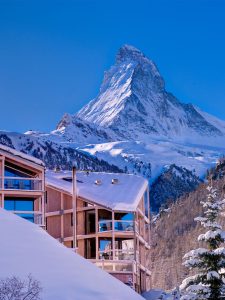Welcome to Hosteliest! In today’s post, we’re breaking down the intriguing topic of Regents Earth Science Travel Time Curve Worksheet Answer Key. Journey with us as we unravel the complexities of this exciting subject in the realm of travel and earth science.
Title: Understanding The Regents Earth Science Travel Time Curve Worksheet Answer Key
Have you ever found yourself grappling with the Regents Earth Science travel time curve worksheet and wondered how to decode its answer key? You’re not alone! Travel time curves might seem confusing on the surface, but they hold the key to understanding seismic waves and the Earth’s structure. In this post, we hope to demystify the answer key and help you along your educational journey. Let’s dive in!
Table of Contents
ToggleWhat is The Regents Earth Science Travel Time Curve Worksheet?
The Regents Earth Science Travel Time Curve Worksheet serves as a tool to teach students about the different types of seismic waves generated during an earthquake. The worksheet features a series of puzzles and questions based around a travel time curve – a graph showing the arrival times of seismic waves based on their distance from the earthquake’s epicenter.
The mysterious ‘answer key’ everyone seeks simply decodes the graphs and data presented in the worksheet. But hold your horses! Before we explore the answer key’s secrets, it’s essential to grasp the basics of travel time curves.
Decoding The Travel Time Curve
A travel time curve maps the relationship between the distance of the seismograph from the earthquake’s epicenter (x-axis) and the time it takes for seismic waves to reach that seismograph (y-axis). Two main types of waves are recorded: P-waves (primary) and S-waves (secondary).
P-waves are the first to arrive at a seismograph station. They are faster and can move through liquid, solid, and gases. On the other hand, S-waves are slower than P-waves and can only travel through solids. By observing the arrival times of these waves, scientists can determine the location of the earthquake’s epicenter.
Unveiling The Regents Earth Science Travel Time Curve Worksheet Answer Key
The ‘regents earth science travel time curve worksheet answer key’ enables students to interpret travel time curves and understand the various distances seismic waves can cover within specific times.
For instance, let’s solve a sample question: If the first P-wave arrives at a seismograph station 4 minutes after an earthquake, and the first S-wave arrives 6 minutes after the earthquake, how far is the station from the earthquake’s epicenter?
Here’s how we decode this using the answer key:
1. Calculate the S-P time interval – the difference in arrival times between the first S-wave and P-wave. In this case, it’s (6-4)= 2 minutes.
2. Refer to the travel time curve. Find the 2-minute mark on the S-P time interval axis. Draw a line straight to the point where it intersects the curve. This gives us a rough estimate of the distance – about 1600km in our example.
This is just one example of how the Regents Earth Science Travel Time Curve Worksheet Answer Key works.
Conclusion
Crunching the numbers and interpreting data through the Regents Earth Science travel time curve worksheet answer key could seem like a tough task initially. But once you understand the basic concept of P-waves, S-waves, and travel time curves, decoding the answer key becomes a whole lot easier.
Remember, understanding the Earth’s structure and seismic activities is not merely confined to answering worksheets correctly. It’s an exciting world that hides answers to our planet’s mysteries, and each travel time curve you decipher takes you one step closer to those secrets. So, hold your answer key high, and get ready to set off on your journey of discovery!
Still have any questions or unsure about anything we’ve covered? Don’t worry! Share your queries in the comments section below, and we will be happy to clarify them for you.
Deciphering the Regents Earth Science Travel Time Curve Worksheet: A Comprehensive Guide for Globetrotters
For decades, the earth has been an endless source of fascination for intrepid explorers and scientists, offering a myriad of mysteries to unravel. One such riddle is proposed through the Regents Earth Science Travel Time Curve Worksheet. This tool is not just essential for geologists but could also be an intriguing learning point for globetrotters.
The travel time curve worksheet deals with seismic waves, specifically their velocity in relation to the different layers of the earth. Understanding this can provide a glimpse into the formation and structure of our planet. However, for travelers, this might seem unrelated to their hotel and travel experiences.
Transforming this scientific concept into an accessible travel context, we can think of the seismic waves as analogous to a traveler’s journey. Various factors impact your travel time, from your mode of transport to the route you take. Similarly, the speed and direction of seismic waves are influenced by the medium (layer of the earth) through which they pass.
In the realm of hotels and travel, this knowledge becomes particularly interesting when visiting seismic regions, such as Japan or California, where earthquakes are part of everyday life. Here, the understanding of these seismic waves might help you appreciate the local architecture and city planning better, as these are heavily influenced by the region’s seismic activity.
Equally compelling could be a visit to geological museums or science centers that often host exhibitions about earthquakes, offering a deeper insight into seismic waves and the earth’s structure. Such a hands-on experience can enrich your understanding of the world and add depth to your travel adventures.
Too often, we traverse the world without understanding the intricate processes that shape it. The Regents Earth Science Travel Time Curve Worksheet might be a complex tool reserved for geologists at first glance, but upon further exploration, it offers fascinating insights, making your travels more informed and enriching.
Understanding the Importance of Regents Earth Science Travel Time Curve Worksheet in Tourism
The Regents Earth Science Travel Time Curve Worksheet is a crucial tool, often used to study and calculate a specific aspect in the field of seismology: the time it takes for seismic waves to travel from an earthquake epicenter to a station located at a certain distance. However, its importance stretches beyond the scientific world. For travel enthusiasts venturing to geographically unstable regions, understanding these travel time curves can be beneficial. It offers valuable insights into potential seismic activity, thereby allowing for precautions to be taken during travel planning. This ensures not only a memorable experience but also a safer journey.
Applying Regents Earth Science Travel Time Curve Worksheet to Hotel Construction
When looking at the tourism industry, safety is paramount, particularly in areas prone to natural calamities such as earthquakes. The knowledge gained from the Regents Earth Science Travel Time Curve Worksheet can be directly applied to hotel construction in these risky zones. By understanding the travel time of seismic waves, architects and engineers can design structures that can withstand the shock of an earthquake. Thus, improving the resilience and longevity of hotels, ensuring guest safety, and ultimately, maintaining the reputation of the region as a safe tourist destination.
Regents Earth Science Travel Time Curve Worksheet as an Educational Tool for Travelers
In addition to the applications in safety and construction, the Regents Earth Science Travel Time Curve Worksheet also serves as a valuable educational tool for travelers. By studying this worksheet, tourists can gain deeper insight into the geological workings of their holiday destinations. This will help them appreciate the nature and culture of the place more profoundly. Furthermore, understanding these aspects may inspire them to participate more responsibly in sustainable tourism practices, contributing to the preservation of these locations for future generations.
Frequently Asked Questions (FAQ)
How could understanding the Regents Earth Science Travel Time Curve worksheet answer key assist in planning travel accommodations?
The Regents Earth Science Travel Time Curve worksheet is primarily used for understanding seismic waves and predicting the epicenter of earthquakes. So it may not directly assist in planning travel accommodations in conventional terms. However, it can provide valuable insights when traveling in earthquake-prone areas.
If a traveler has knowledge derived from the Regents Earth Science Travel Time Curve worksheet, they might use this to better understand the risk profile of different geographic locations which are prone to earthquakes. For instance, travelers could use this information to avoid booking accommodations near fault lines during times when earthquake activity is known to be higher. It’s important to note though that most travelers are unlikely to have deep knowledge of seismic activity patterns.
In case of hotels, an application of such knowledge could be seen in the form of emergency preparedness. Hotels located in seismically active regions could benefit from understanding these charts to ensure optimal safety protocols for their guests. It might help them design evacuation plans and other safety measures.
Thus, while the Regents Earth Science Travel Time Curve worksheet isn’t a typical tool for planning travel accommodations, understanding its insights could enhance safety when traveling or offering accommodation services in earthquake-prone areas.
In what way does the information from the Regents Earth Science Travel Time Curve worksheet answer key help in travel forecasting, especially when considering geographical factors?
The Regents Earth Science Travel Time Curve worksheet answer key is a tool designed for understanding seismic activities, rather than directly aiding in travel forecasting. However, it inadvertently provides valuable insights into geographical features and factors, which can be crucial for travel planning, especially in geologically active regions.
The travel time curve gives us an understanding of the seismic wave travel times, essentially helping to estimate the distance to the epicenter of an earthquake. This implies that if you’re planning to visit or establish a hotel in an area prone to seismic activities, this tool can provide critical data about potential risks.
Moreover, the data from the curves can be applied in travel forecasting by using the information about the geographical layout indirectly. For instance, it can inform about the terrain’s geological composition and structure, which might influence the road conditions, construction feasibilities, and thus, travel routes and times.
To sum up, while the Regents Earth Science Travel Time Curve worksheet answer key might not inherently seem like a travel forecasting tool, it indeed provides critical geographical data that could considerably aid in comprehensive travel planning and hotel location selection, paying heed to seismic safety measures.
How can knowledge derived from the Regents Earth Science Travel Time Curve worksheet answer key be applied in the field of hospitality and hotel management?
The Regents Earth Science Travel Time Curve worksheet is an educational tool used to analyze seismic activity and determine the location of earthquake epicenters based on data from seismic stations. However, it might appear challenging to directly apply this knowledge to the field of hospitality and hotel management. Yet, indirect application can be made with a bit of creativity. Here are a few examples:
1. Disaster Preparedness: Hotels located in earthquake-prone areas can use this knowledge to equip themselves better for disaster management. Understanding the seismic patterns can help in formulating safety protocols, organizing drills, and ensuring structural safety of the building.
2. Sustainable Design: Insights from these worksheets can assist architects and designers in creating earthquake-resistant structures. This is highly beneficial in the context of designing or renovating hotels in seismically active regions.
3. Informing Guests: If your hotel is situated in an area prone to earthquakes, then keeping guests informed about potential risks and safety measures is crucial. Understanding the travel time curve helps management effectively communicate earthquake-related information.
4. Risk Assessment: The knowledge of seismic activities could help hotel owners assess the potential risks involved in setting up properties in certain locations. This can significantly impact business decisions.
5. Insurance Policies: Information derived from seismic data can also influence a hotel’s insurance policies. It can help determine the level of coverage required in relation to potential natural disasters.
Therefore, while the Regents Earth Science Travel Time Curve worksheet answer key may not seem germane to the hospitality industry at first glance, its knowledge can indirectly contribute significantly to hotel management, especially in earthquake-prone areas.
In conclusion, the regents earth science travel time curve worksheet is an essential tool for those passionate about Earth Science, and even more so for those in the hotel and travel industry. Being able to understand and interpret these curves facilitates a richer understanding of the Earth’s structure, providing invaluable context for accommodating guests from around the world. It allows us to anticipate various natural phenomena, ensuring the safety and comfort of our guests. As we move forward, integrating such scientific knowledge into our daily operations and practices will not only enhance our services but also widen our appreciation of the planet we inhabit.

